Brush and Tree Lizards in California - genus Urosaurus


| These are small brown or grey lizards with small scales, typically found on trees, bushes, fences, walls, and rocks in the southern deserts and along the Colorado River. The three species can be distinguished by their range and by a close examination of the scales on the back as shown below. |
||
| Long-tailed Brush Lizard - Urosaurus graciosus |
||
| Found on bushes and small trees in sandy areas in the southeast deserts, usually on a Creosote bush. Brush lizards are small, diurnal, desert-dwellers, with a tendency to climb. |
||
 |
 |
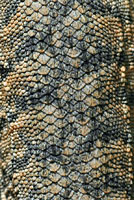 |
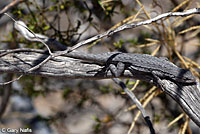 |
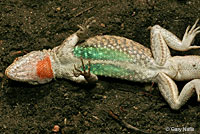 |
There is a wide band of enlarged scales down the middle of the back. This band is not split in the center by a band of smaller scales. Compare with the split band of enlarged back scales of the Tree Lizard and with the small band of slightly-enlarged scales on the Black-tailed Brush Lizard. Both species are also shown below. |
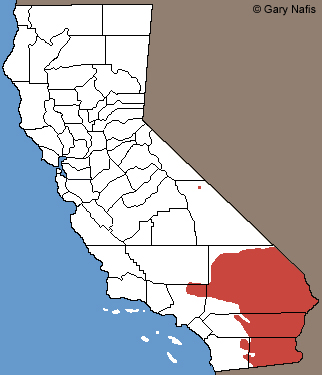 |
||
| Small-scaled Lizard - Urosaurus microscutatus (aka Baja California Brush Lizard - Urosaurus nigricaudus) |
||
| Found on rocks and brush only in the peninsular ranges. | ||
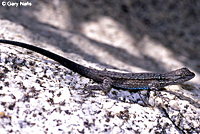 |
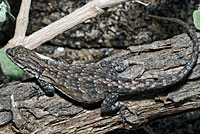 |
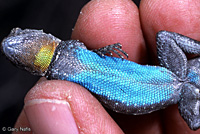 |
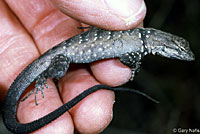 |
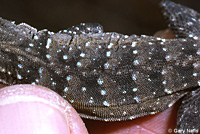 |
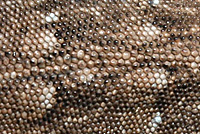 |
| There is a band of slightly-enlarged weekly keeled scales on the middle of the back. Compare with the larger and more strongly keeled band of scales on the Long-tailed Brush Lizard above, and on the Tree Lizard below. |
||
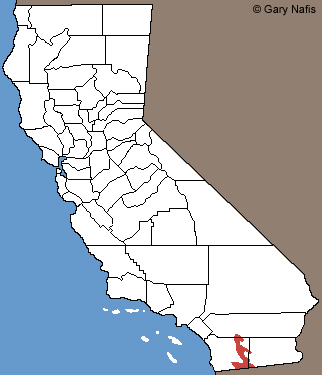 |
||
| Tree Lizard - Urosaurus ornatus |
||
| Tree lizards are mostly found near the Colorado river in the extreme southeast. They may be spreading west along irrigation canals in the Imperial Valley. |
||
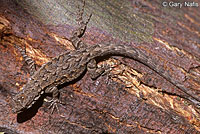 |
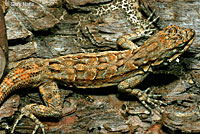 |
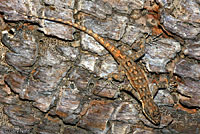 |
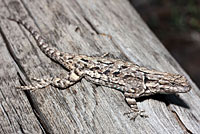 |
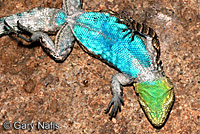 |
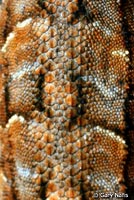 |
| There is a wide band of enlarged scales down the middle of the back that is split in the center by a band of smaller enlarged scales. Compare with the un-split wide band of scales on the back of the Long-tailed Brush Lizard and with the small band of slightly-enlarged scales on the Small-scaled Lizard, both shown above. |
||
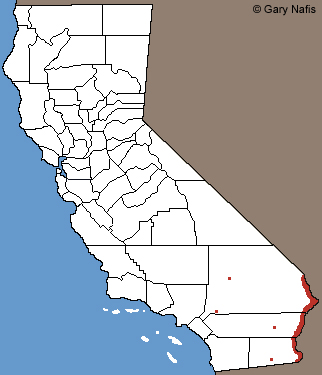 |
||
| Tree and Brush Lizards have a band of wide scales running down the middle of the back. Sometimes these larger scales are split by a band of smaller scales. |
||
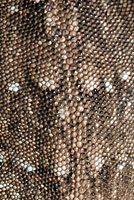 |
 |
 |
| The Small-scaled Lizard has a mixture of small granular scales and larger weekly-keeled scales on the dorsal surface. The band of enlarged weekly-keeled scales is not split in the center by a band of smaller scales. These enlarged scales are smaller than those of the Western Long-tailed Brush Lizard. |
The Western Long-tailed Brush Lizard has a band of slightly-enlarged scales on the middle of the back that are not split in the center by a band of smaller scales. These enlarged scales are larger than those of the Small-scaled Lizard. |
The band of wide weekly-keeled scales on the back of a Tree Lizard is split in the center by a band of smaller scales. The lizard shown above is not the subspecies found in California - U. o. symmetricus, which has a wider band of small scales splitting the band of wide scales on the back than the subspecies illustrated here (which you can see in this H.E.R.P. Database photo.) (I don't have a close-up picture of the back of U. o. symmetricus. If you do, please send it to me so I can use it here!) |
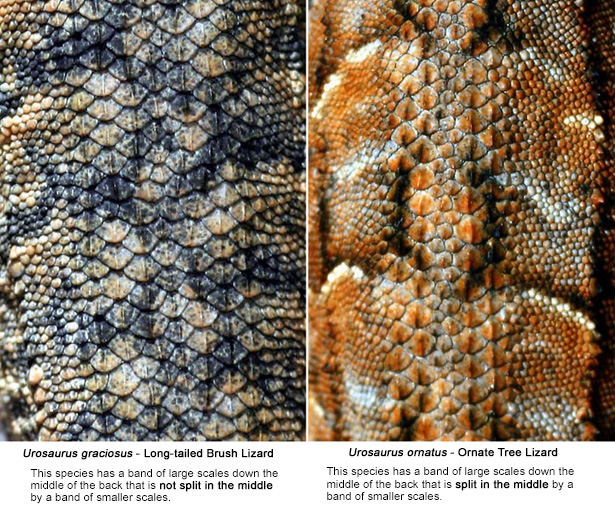 |
||
Return to the Top
© 2000 -
